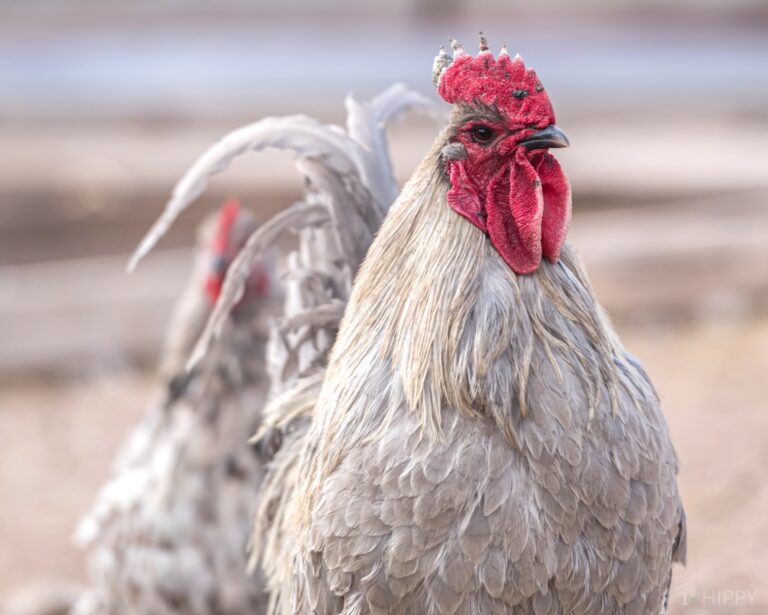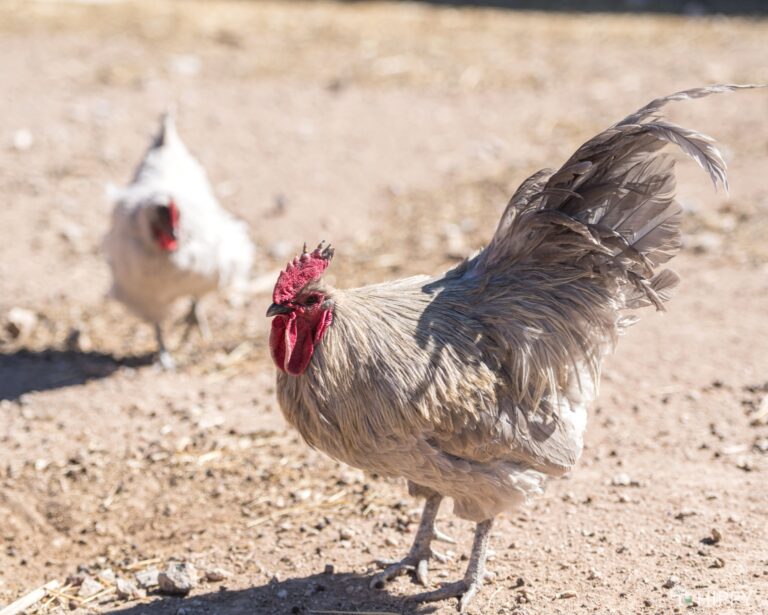When it comes to chickens, there is no shortage of breeds to choose from. Every chicken fancier has their favorite, but if there is one breed that is genuinely a chicken-lover’s chicken, it has to be the Orpington. And among the various Orps, the Lavender variety is one of the most interesting and attractive yard breed around.

There’s a reason why breeders are springing up all across Europe and the United States, as this once vanishingly rare variety that only recently popped up on the scene is being found more often.
If you’ve been cruising for a special chicken to add to your flock, you might have found the one. Keep reading I’ll give you 10 quick facts about the Lavender Orpington…
Lavender is Not an Officially Recognized Plumage for Orpingtons
What might shock you is that lavender is not an officially recognized plumage color for Orpington chickens. And that includes in the UK as well as the US, and anywhere else around the world that I am aware of.
For starters, this breed variation only recently showed up on the scene in the ’90s (more on that in a minute) but more practically there is no governing poultry body or association that has officially accepted them as a standard color.
And it might be some time considering that the breed has been around since the late 1800s! I suppose it is hard to improve on the original colors of black, blue, white, buff, and splash…
“Lavender” Feathers are Actually an Iridescent Gray
And if you’ve been dreaming of a pale purple chicken, I might have to disappoint you. Lavender doesn’t really mean lavender like you are thinking, although some of these birds come shockingly close in the right light.
Lavender is actually an iridescent gray color that has a shimmery, color-bending effect in the right sunlight.
Make no mistake, these Orpingtons are undeniably beautiful (assuming you like the color), and are definitely one of the most intriguing varieties around. Even so, Lavender Orpingtons run the gamut from a smoky, pearly gray to a pale, dusty sky gray.
They are a Rare Boutique Breed
I mentioned above that the Lavender Orpington has only been around for a short time. It was actually first bred in the UK in the ’90s, the 1990s that is.
A specialist breeder with serious worked ceaselessly for years on end to produce the Lavender Orpington we know and love today, but now it is here and looks like it is here to stay.
But even as late as the early 2000s, these chickens were vanishingly rare, especially in the United States.
As their beauty and excellent demeanor have caught on, along with the other typical characteristics of all Orpingtons, their popularity has spread like wildfire. They’re still quite rare among all other varieties, but they are out there!
Lavender Orpingtons are Still Capable Dual-Use Chickens
The Orpington chicken was originally bred as a utility chicken before morphing over time into a “fancy” or show bird. This means they were raised for both meat and eggs, and way back then they could produce around 300 eggs each and every year.
Unfortunately, with the crazy popularity and boom in chicken keeping that occurred in the UK in the late 1800s and early 1900s, the Orpington was soon selected for looks, not utility.
This led to a significant drop in egg production, and today your typical Orpington hen, including the Lavender ladies, will crank out somewhere around 200 eggs yearly.
However, for a homesteader or backyard keeper this is still a ton of eggs, and these sizable birds continue to make a fine table bird. Despite their exhibition popularity, they remain a viable utility chicken today.
They are Friendly Docile Birds
Lavender Orps, like all Orpington chickens, are famously friendly, calm, and docile. They are known and beloved for being good-natured, sweet, affectionate, and eager to get closer to their human owners. They even get along with most pets and other animals so long as they are well socialized!
If you want a bird that is amiable to handling and interaction, it’s hard to do better than Orpington, and the Lavender variety is no exception. It also happens to be among the most beautiful, but I am biased!
They Aren’t Very Predator-Aware!
But, if there is a downside to this docility it is that Orpingtons aren’t very predator aware. They are so friendly they seem almost completely oblivious to the fact that there are some critters out there that would like to kill and eat them.
I’ve seen Orps that did not react to the presence of a predator until it was simply too late- almost as if they didn’t expect that an attack was coming even when it was obvious.
A Lavender Orpington rooster will be significantly more on guard compared to the hens, naturally, but compared to the roosters of other breeds I wouldn’t necessarily count on him to get the job done. Keep this in mind if you live in an area with lots of predators!

Lavender Orps are Broody but Diligent Mothers
Where Orpingtons are famous for friendliness, they’re infamous for broodiness. This means that hens are highly intent on hatching their eggs, and this can hamper both production and your easy access to those eggs if you are collecting them.
But on the upside, that broodiness means they are still strongly connected with their ancient, motherly instincts.
Lavender Orpingtons are uniformly excellent mothers and very attentive to their chicks. If you want to expand your flock naturally, or use an Orpington hen as a surrogate, you can definitely count on her.
These Orpingtons Aren’t Quite as Bulky as They Look
Orpingtons are big birds. Lavenders look especially large because of that brighter coloration. But though they are a larger breed they aren’t quite as huge and massive as they look at first glance.
Although their feathers follow their body outline, they almost stand off of the body to a degree. This means that you might be surprised to find they are a bit slimmer than expected if you pick up an Orpington.
Not harmful, not necessarily good either, just a fun bit of trivia that is sure to entertain your friends and any visitors. It’s almost like they are wearing clothes that are too big for them!
But They are Heavy!
Feathers aside, Lavender Orpingtons are still genuinely heavy chickens. Roosters tip the scales at around 10 pounds and hens are only a little bit lighter at around 8 pounds.
This means if you’re going to raise them for meat you’ll definitely get a sizable harvest out of them. But practically it also means that you have to put their roosts and nesting boxes closer to the ground.
Orpingtons don’t fly well, and if they have to jump up and down from high places they are far more prone to injury compared to lighter chickens.
Lavender Orpingtons are Capable Foragers
Lavender Orps aren’t just beautiful and majestic primadonnas; they are remarkably good foragers, and if you have plenty of plant- and insect life on your property that they can partake of they can do a lot of the work when it comes to feeding themselves.
It’s pretty remarkable, actually. They are quiet most of the time, but you’ll be able to watch them hunt, peck, and scratch everywhere tracking down food and they do a very good job of it.
If you can keep them safe from predators, they are a breed that does well when free-ranging.
Tim is a farm boy with vast experience on homesteads, and with survival and prepping. He lives a self-reliant lifestyle along with his aging mother in a quiet and very conservative little town in Ohio. He teaches folks about security, prepping and self-sufficiency not just through his witty writing, but also in person.
Find out more about Tim and the rest of the crew here.
